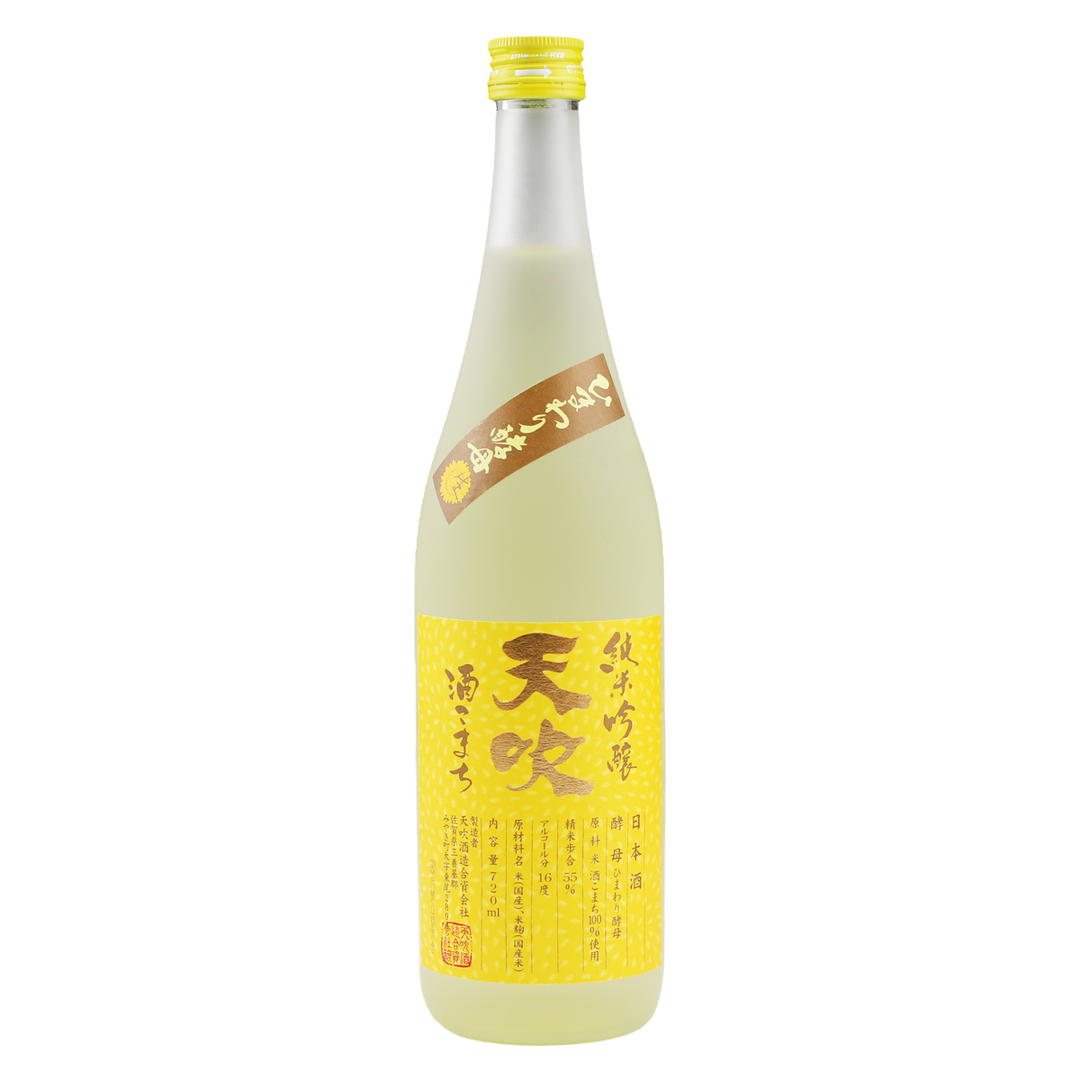
Amabuki Junmai Ginjo Nama "Himawari"
- In stock, ready to ship
Perhaps it’s the power of suggestion, but I get so many nutty and seedy notes from Amabuki himawari. Unrefined sunflower oil, cashew butter, dried chamomile, apple rings, marzipan. There is a fresh edge of cucumber, lychee, asian pear and winter melon, as well as a fascinating finish that evolves from a satisfying, crisp dryness, into an oily, seedy, long aftertaste.
Personally, I think the nama version of this sake is at its best after a bit of maturation, and being open a little while. When freshly opened, there is a sharp “nama-ness” that takes a little time to blow off, maybe a few days or a week. The flavor and texture completely changes over that time. So I recommend trying a glass or two of this sake when it’s freshly open, and returning to it after a week or so. My favorite glass of this bottle is always the last.
STORAGE
Store the unopened bottle in the refrigerator, ideally in the back (not the door) and consume within 6 months. With a this sake has had a chance to mellow out a bit and the nutty, oily texture is showing extremely well. Once open, it’s going to evolve rapidly in the first 1-2 weeks, settling into a new identity for the subsequent 4-6 weeks, then mellowing and remaining fairly stable for months.
Brewery: Amabuki Shuzo, 天吹酒造
Location: Miyaki village, inland Saga prefecture (very close to Kurume, a larger city in Fukuoka prefecture)
Water: Soft Sefuri Mountain riverbed water
Rice: local, contract grown Sake Komachi
Polishing level: 55%
Grade: Junmai Ginjo
Yeast: Wild yeast isolated from sunflowers
Starter: Sokujo
Alcohol: 16%
SMV: +7 (dry)
Established 1688 in the northern Kyushu region, Amabuki Brewery has been producing sake earnestly for over 325 years. They make use of locally harvested Saga rice and underground water and to create unique, high grade sake. Their specialty - a new style of using flower yeasts - is a combination of their skill, creativity and hard work, and led to new level in sake. Enriching your most relaxing times with the elegant and unique fragrances and flavors in their brews has been their ultimate duty for generations.
This sake was extremely versatile and enjoyable with unfussy food and snacks. I think the best bite I enjoyed was with a selection of semi-firm and semi-soft cheeses and a few dried apricots. While I didn’t get the chance to have it with Russian food this time around, I’m absolutely convinced it would be a perfect match for the zakuski I grew up with (vinegret, deviled eggs, caviar blini, headcheese with horseradish, piroshki…stop by Kachka Lavka and ask for the works). Pistachio-dotted saffron pilaf, flax crackers with seed cheese, slices of French comte, and all sorts of leftovers. Serve chilled, but let it warm up in the glass. This is one of the few namas that can be really enjoyable– even better– at room temp or even a little warm.

